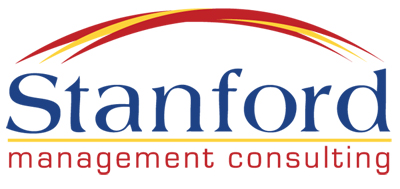A ‘Policy’ is a predetermined course of action established to provide a guide toward accepted business strategies and objectives. In other words, it is a direct link between an organization’s ‘Vision’ and their day-to-day operations. Policies identify the key activities and provide a general strategy to decision-makers on how to handle issues as they arise. This is accomplished by providing the reader with limits and a choice of alternatives that can be used to ‘guide’ their decision making process as they attempt to overcome problems. I like to think of ‘policies’ as the “What” that guides the foundation and structure in our business. They set the boundaries for all operational decisions. With that concept in mind let’s take about procedures next.
The ultimate goal of every procedure is to provide a clear and easily understood plan of action required to carry out or implement a policy. A well written procedure will also help eliminate common misunderstandings by identifying job responsibilities and establishing boundaries for the job holders. Good procedures actually allow managers to pro-active and prevent the organization (and employees) from making costly mistakes. The procedure is the road map that guides you to your destination and keeps you from getting lost. I like to think of procedures as the “How” that supports all operational policies.
The major differences between policies & procedures are identified below:
Policies:
- Are general in nature
- Identify company rules
- Explain why they exist
- Tells when the rule applies
- Describes who it covers
- Shows how the rule is enforcement
- Describes the consequences
- Described using simple sentences & paragraphs
Procedures:
- Identify specific actions
- Explain when to take actions
- Describes alternatives
- Shows emergency procedures
- Includes warning & cautions
- Gives examples
- Shows how to complete forms
- Are normally written in outline format
Policies & procedures are required when there is a need for consistency in your day-to-day operational activities. Policies and procedures also provide clarity to the reader when dealing with accountability issues or activities that are of critical importance to the company, such as, health & safety, legal liabilities, regulatory requirements or issues that have serious consequences.
If your organization already has established Policies & Procedures, how can you determine if they are meeting your needs? A few ‘Critical’ signs that your policies and procedures need to be reviewed and updated would include an increase in the number of accidents, higher failure rates or costly overruns. The workforce can also provide important clues that your company’s policies and procedures need to be reviewed. These clues could include more staff questions on ‘normal operations’ or a feeling of general confusion within a department or division. Employees may also be demonstrating inconsistency in their job performance and there may be an increase in the workforce’s stress levels. Finally, your customers may provide additional clues in the form of increasing complaints.
Now that we have a better understanding of policies & procedures let’s take a look at the major benefits they provide. First, employees are provided with information that allows them freedom to carry out their job and make decisions within defined boundaries. Second, employees understand the constraints of their job without using a ‘trail and error’ approach. Third, policies & procedures enable the workforce to clearly understand individual & team responsibilities. Finally, clearly written policies & procedures allow managers to exercise control by exception rather than ‘micro-manage’ their staff.
It’s easy to see that well-written policies & procedures benefit the company as well as the employee. From an employee perspective the guidelines provided in policies and procedures allow workers to perform their jobs with respect and dignity. Polices provide guidance on how to handle issues properly as well as clearly identifying their job constrains. The organization benefits by allowing managers the freedom to concentrate on strategic issues because policies and procedures are in place to guide the normal-day-to-day operations.
If your policies and procedures are incomplete, outdated or inconsistent, then you are probably not driving the performance improvement you intended.
